Gypsum Application to Soil
With certain types of soil, such as those found in the Cerrado region of Brazil, application of large quantities of gypsum (calcium sulfate) to the soil causes coffee roots to grow deeper, enabling them to access more moisture during dry seasons and prolonged periods of drought.
Status: used operationally in Minas Gerais on coffee, and on other crops in the US.
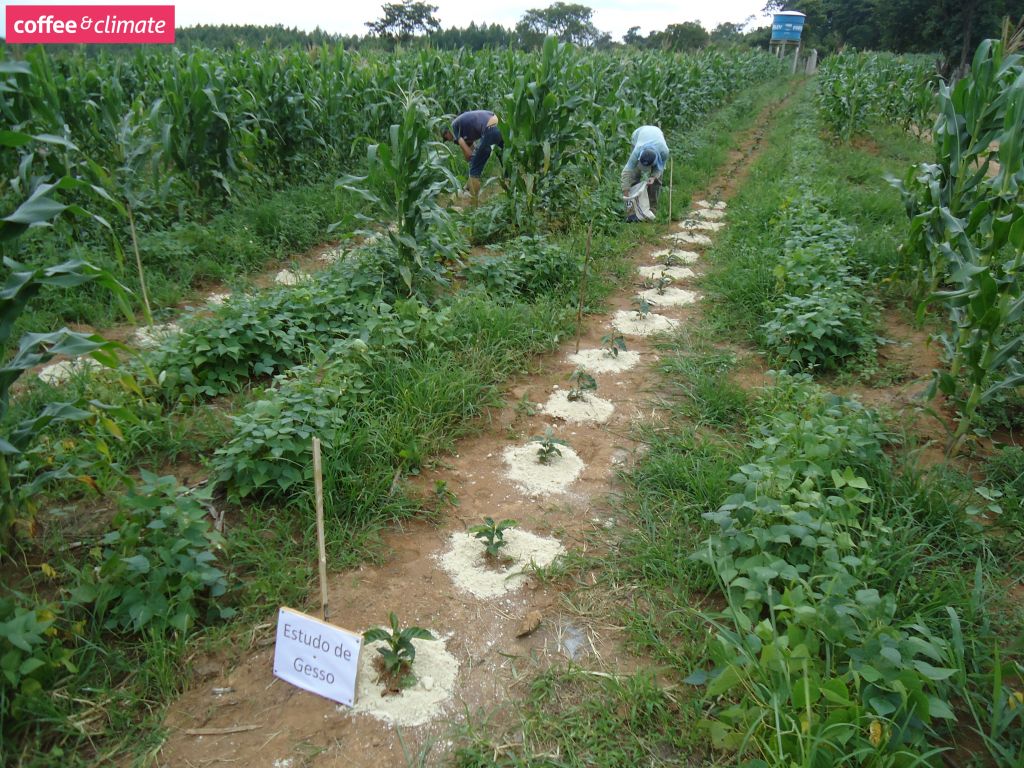
Concept
In certain types of soil, especially oxisols and other soils that are sodic, highly acidic or suffering from high levels of aluminium, application of gypsum has been found to improve yields of coffee and many other crops. Although applications of lime (calcium carbonate + varying quantities of calcium oxide, magnesium oxide and magnesium carbonate) can reduce soil acidity, frequently the effect does not penetrate into the deeper layers of the soil. Gypsum (calcium sulfate) is far more soluble than lime and can penetrate deeper into many soils. The calcium in gypsum enhances the formation of soil aggregates. This process tends to counteract soil crusting, allowing air, water and nutrients to penetrate deeper into the soil profile. Gypsum has been shown to counteract Al toxicity and to increase availability of Ca ions throughout the soil, both of which can affect coffee yields. The above factors all make it easier for coffee roots to grow downwards and penetrate deeper into the soil where they will tend to find increased moisture, especially in the dry season, and thereby better resist severe droughts.
Drawbacks
May not work in all soils, especially sandy ones. Long term effects on the soil and deep water supply have not yet been established in all cases. High calcium antagonizes the uptake of other ions, so overall coffee nutrition may suffer during this ‘one-off’ application. This can be seen as similar to a drug side-effect which has to be endured for long-term benefit. When soil aggregates form, they break up the structure of the soil and allow nutrients to penetrate deeper into the soil, but also to leach out more quickly. As such, more nutrients may need to be added. For this reason, without expert assistance, it is better to first apply gypsum to the soil of a small number of trees and observe results.
Costs
Inexpensive: Gypsum is a by-product of other industrial processes and therefore should not be expensive. However, very high amounts are sometimes used (as much as 20 tons per hectare), though these will be ‘one-off’ applications that should last for many years. Because large amounts may be needed, the transport costs may be a limiting factor – for example, in Brazil, the cost of a ton of gypsum is R$ 63, but the transport is 80 R$/ton.
Recommended Activities
- Start small. Since for coffee (apart from Brazil) this is a relatively new technique, a good strategy would be to develop a farmer field school or demo-plot on a small scale to test out gypsum application before scaling its use.
- Hold a farmer group meeting to show available videos of the process and results.
- Select one or more fields to dig 2m-deep trenches to study the soil profile.
- Select trial plots of about 20x20m, if the soil profiles look promising (i.e. shallow roots but deep moisture) for gypsum treatments.
- Take soil samples where possible for laboratory analysis – seek expert advice on interpretation if possible. Observe the level of magnesium in the soil and visual indications of magnesium deficiency on the leaves, since the high quantity of calcium in gypsum can cause a reduction in magnesium. Should that be the case, use fertilizer to correct the deficiency, and continue to make a leaf analysis annually.
- Apply gypsum to the soil during the growth phase of the coffee plant (years 1-4) to stimulate root development. In Brazil field trials, it was applied in the rainy season (February/ March). Reported field application rates are up to 28t/ha, which translates to 7kg/m along the lines of trees. If possible different application rates should be tried, e.g. 0,7, 14, 21 and 28t/ha.
- Study the effects for 2+ seasons – including root excavations, yield measurements and general observation of the health and appearance of the coffee trees. Soil samples from up to 2m deep should be taken every 6 months and analyzed for nutrient levels. Where expert help and soil analysis is lacking, limit trials to just a few trees at first to observe the impact.
- Have something to add to this tool description? Leave a comment!
- Interested in applying this tool? Look for pictures, case studies and info sheets below for step-by-step instructions to get you started.
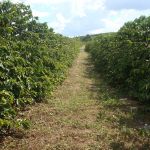
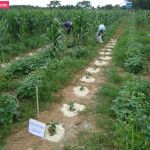
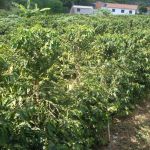
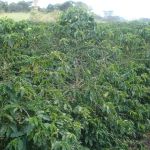
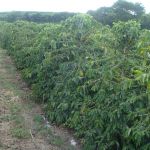
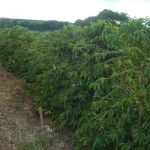
Spot on with this write-up, I truly think this website needs much more consideration. I’ll probably be again to read much more, thanks for that info.
More Information About Calcium Carbonate
We do have an innovative product, already registered by the Ministry for Agriculture in Italy (but also in the Ue) which might help to improve:
a) the structure of the soil;
b) the use of irrigation water and sensibly reduce its consumption and at the same time it reduces the water stress during cultivations;
c) the quality and quantity of the various crops.
Additionally, this innovative product proved to be even more effective when used in combination with Gypsum.
Please contact us for further information on it.
Thanks.
Micronizzazione Innovativa S.r.l.
20090 Buccinasco (Milan/Italy)
email: r.sorgenti@mipolimeri.com